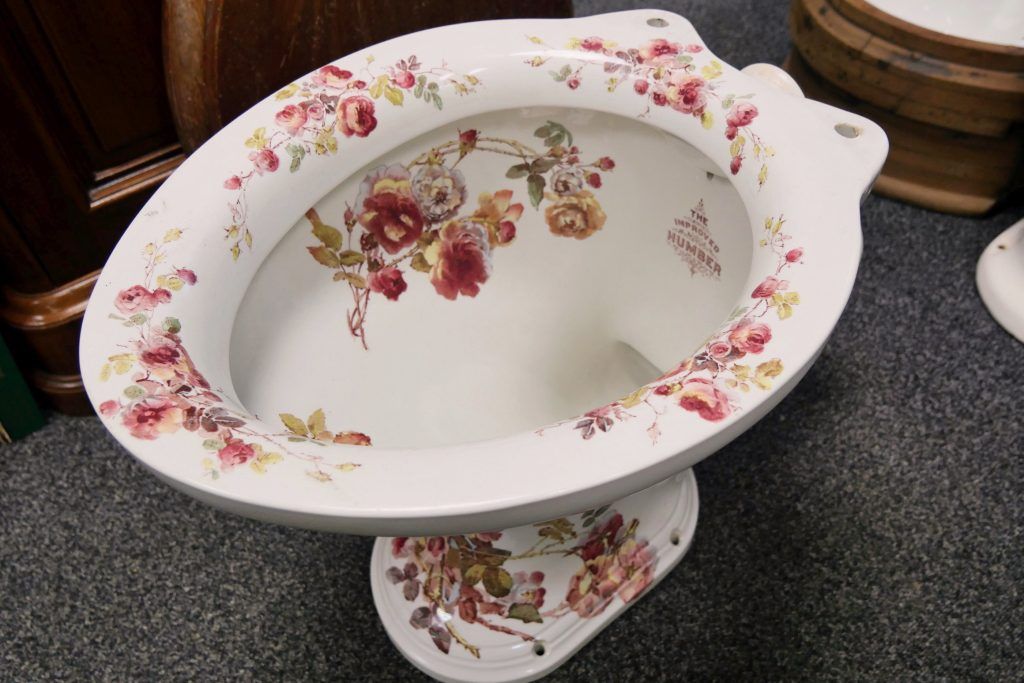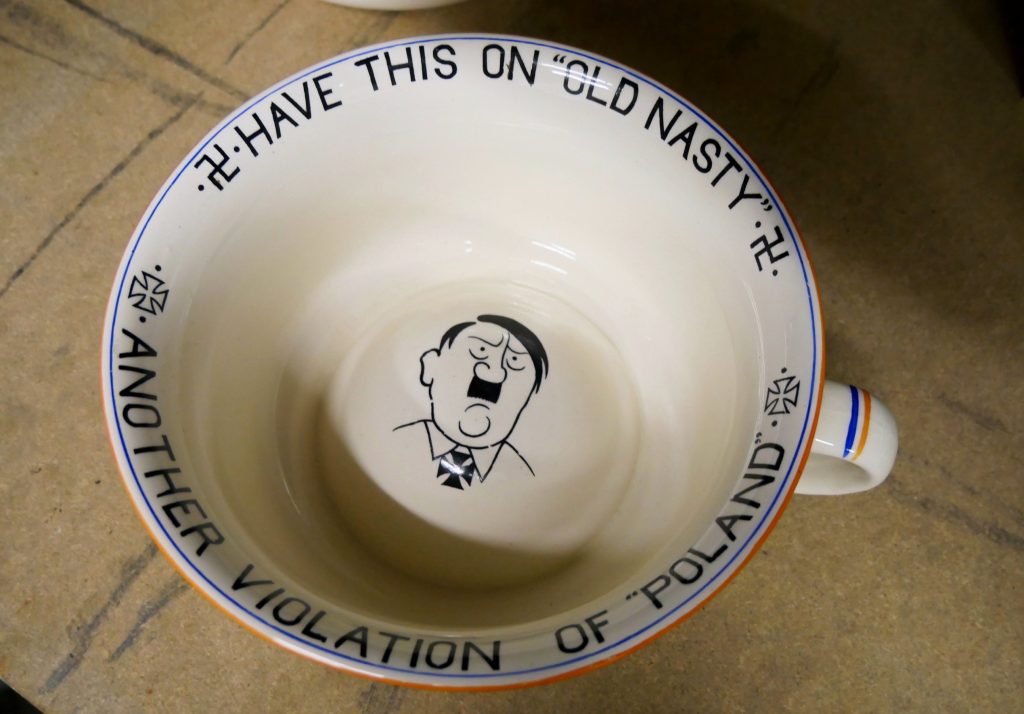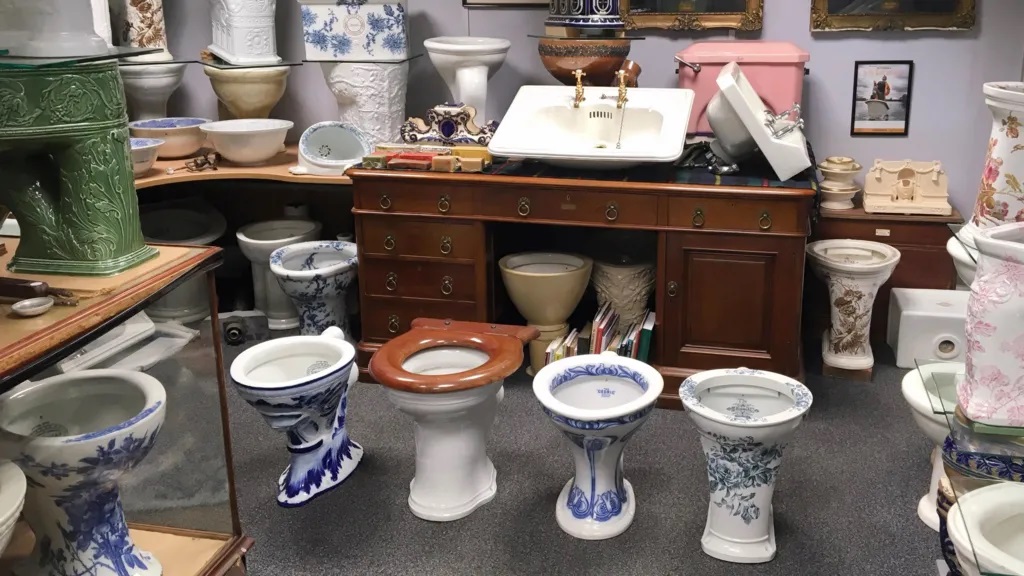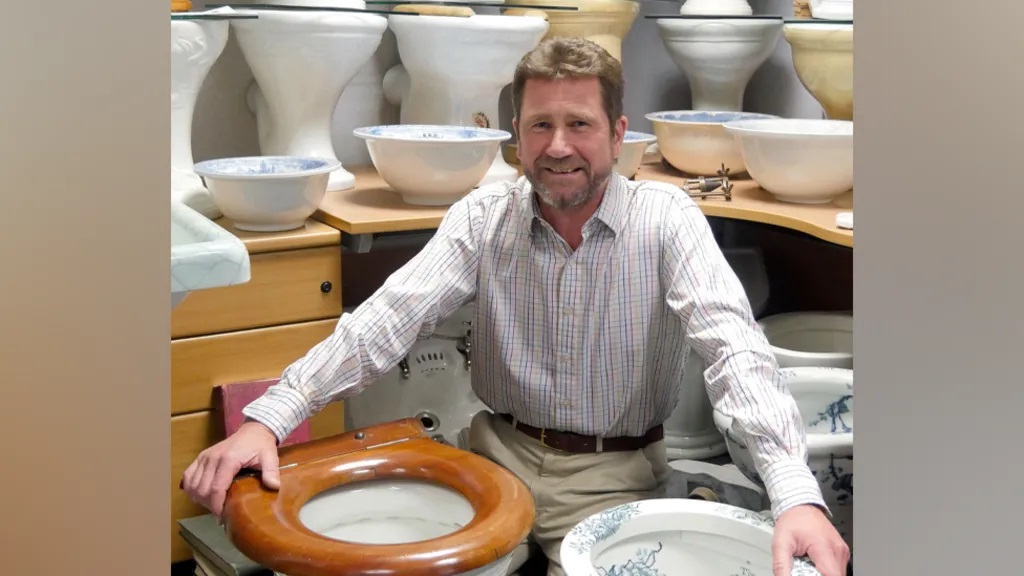Hitler-faced potty among the unique collection of historic bathroom fixtures being sold
A potty with Adolf Hitler‘s face on the bottom is among a collection of bathroom items up for sale, along with hundreds of Thomas Crapper loos. He is famous for improving the toilet and inventing the floating ballcock. Toilets, taps, basins, and baths make up the Crapper cluster, with the owner hoping someone will be keen enough to buy it as a complete set, lest the lovely lavs be split up.
According to the BBC, eight years after leaving Warwickshire-based Thomas Crapper & Co., Simon Kirby, the former boss, is selling hundreds of vintage items. The nearly 40-year-old collection, which served as the foundation for the company’s private museum, can be yours for roughly £300,000.



Mr. Kirby claimed that while serving as managing director, he progressively gathered the pieces as a side project. His collection includes polished wooden loo seats, ancient brass taps, enormous old cast-iron baths, and the potty with the Fuhrer feature, which was really developed by Crown Devon rather than Thomas Crapper.
Mr. Kirby said, “These pieces are now so rare that the collection could not be assembled today.”
“I no longer run a Victorian sanitaryware company, so I cannot justify keeping the collection. It is time for it to be explored and enjoyed by the public.”
Salvo, an online marketplace for architectural salvage, received a request to assist in finding a new home for the collection in order to “preserve its future,” according to CEO Sara Morel.
On the Salvo website, a video tour with never-before-seen footage of the complete collection was posted.
Ms. Morel said: “Touring the private museum was fun, insightful, and a privilege. As the video shows, each piece holds stories that must be saved and shared.”
Salvo claimed that the displays, which included over 1,200 objects spanning the 1830s to the 1960s, were in excellent shape.
Kirby’s interest in toilets originated in childhood when his mother gave him a copy of the book ‘Temples of Convenience,’ which showcased many old toilets.
The video also showcases some Victorian urinals with a unique feature: a bee painted on the inner surface as a target to minimize splashing, a clever strategy for men who might ‘sprinkle when they tinkle’. While we see this technique in some modern public urinals using a fly image, many may not know it’s not a new idea but a revival from the past. Interestingly, the choice of a bee was not random. In Latin (a language in which many gentlemen of the era were educated), ‘bee’ is pronounced ‘apis’, which sounds like ‘a piss’ in English – a witty reference to the urinal’s function.

